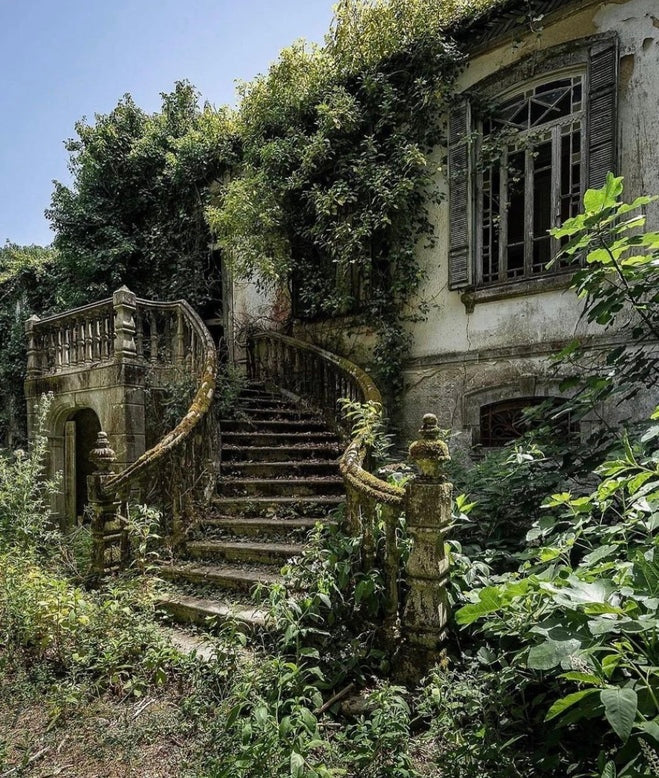Discover the Top 10 Abandoned Places in Utah: explore eerie, historic locations perfect for urbex enthusiasts and lovers of mystery.
Utah, with its stunning natural landscapes and rich history, is also home to several abandoned places that offer a glimpse into the past. From ghost towns left behind by the mining boom to eerie industrial ruins, these locations provide a hauntingly beautiful look at what once was. Here are 10 of the most captivating abandoned places in Utah for urban explorers and history enthusiasts.
1. Grafton Ghost Town (Near Zion National Park)
Grafton is one of the most famous ghost towns in Utah, located just outside Zion National Park. Settled in the 1850s, it was abandoned due to flooding and conflicts with Native American tribes. Several buildings remain, including homes, a schoolhouse, and a cemetery. The decaying structures against the backdrop of Utah's red rock formations make it a hauntingly beautiful place to explore.
2. Thistle Ghost Town (Thistle, Utah)
Thistle was a small railroad town that was devastated by a massive landslide in 1983, forcing its residents to flee. The town was completely abandoned after being submerged under water for a time. Today, what remains of Thistle, including homes and a schoolhouse partially buried in mud, stands as a reminder of nature’s power. It's one of the most famous modern ghost towns in Utah.
3. Tintic Standard Reduction Mill (Goshen, Utah)
The Tintic Standard Reduction Mill was built in 1920 to process ore from nearby mines. It was abandoned just a few years later and has been left to decay ever since. The concrete structures of the mill, covered in colorful graffiti, offer a striking contrast to the desolate desert landscape surrounding it. The massive, rusting remnants make it a popular spot for urban exploration and photography.
4. Silver City Ghost Town (Juab County, Utah)
Silver City was once a booming mining town in the late 1800s, but when the silver ran out, the town was abandoned. Only a few crumbling foundations and scattered debris remain today, but its rich history makes it a fascinating ghost town to explore. It’s an off-the-beaten-path destination for those seeking solitude and a glimpse into Utah’s mining past.
5. Old Irontown (Iron County, Utah)
Founded in 1868 as an iron mining town, Old Irontown was abandoned in the 1870s when the smelter shut down. Today, remnants of the original iron foundry, kilns, and stone buildings remain. The site has been partially restored as a historic park, but many sections are still in a state of beautiful decay, offering a glimpse into Utah’s industrial history.
6. Helper's Abandoned Coal Mines (Helper, Utah)
Helper was once a thriving coal mining town in the early 20th century. Though the town itself still exists, many of the old coal mines and associated infrastructure have been abandoned. Rusting machinery, old railroad tracks, and dilapidated mining equipment can be found scattered throughout the area. The abandoned mines provide an eerie reminder of the hard labor that once fueled this town.
7. Sego Ghost Town (Sego Canyon, Utah)
Sego was a coal mining town established in the early 1900s. The town thrived for a few decades before it was abandoned in the 1950s. Today, visitors can find decaying structures such as a general store, mine entrances, and old foundations. The town’s remote location in Sego Canyon makes it a peaceful but eerie spot for exploration.
8. Saltair (Great Salt Lake, Utah)
Saltair was once a popular resort located on the shores of the Great Salt Lake. The original Saltair pavilion was built in the late 19th century but was destroyed by fire and flooding. The resort was rebuilt multiple times before being completely abandoned. The remaining structures, including the ruins of the old pier and crumbling buildings, create a haunting atmosphere by the lake.
9. Lime Ridge Ghost Town (Beaver County, Utah)
Lime Ridge is an abandoned mining town that was once home to workers from the nearby lime kilns. The town was abandoned in the early 20th century, and today, the remains of old stone cabins and kilns can still be found. The remote, windswept location adds to the ghostly feel of this forgotten settlement.
10. Topaz Internment Camp (Delta, Utah)
Topaz was one of the Japanese-American internment camps during World War II, where over 8,000 people were held. After the war, the camp was abandoned, and most of the buildings were torn down or removed. However, the concrete foundations, some remains of the original structures, and a memorial still exist on the site, providing a haunting reminder of this dark chapter in American history.
Discover the best abandoned places with our maps !
Are you looking for the best urbex locations near you? Look no further! Whether you're a seasoned urban explorer or a curious hobbyist, our maps are full of abandoned places to explore. Discover our Maps !












